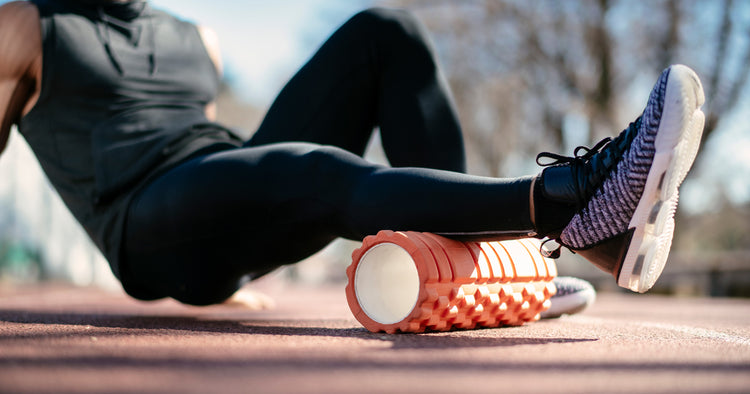We all want fast results, but gaining fitness and strength isn’t all about work. Rest days are an essential part of any successful fitness routine. While it might seem like resting won’t get you towards your goals of losing weight, gaining strength or increasing speed, time off from your workouts will give your body time to recover and adapt. They’re especially important when high intensity training like HIIT, circuit training, or heavy weight training are a part of your regular routine.
When you work out energy stores are depleted, and muscles and tissues are broken down. Without rest your body is susceptible to severe muscle soreness, a suppressed immune system, stress and mood swings, as well as a decrease in overall strength and performance, and injury. Never taking a break from your workouts, sets your body up for breakdown.
Included below are my top tips for including adequate rest and recovery in your fitness routine. You might be surprised, it doesn’t always mean doing nothing – many of these solutions still contain low intensity exercise, movement, or some other sort of self-care practice designed to give your body what it needs.
How Often Should You Rest?
At a minimum, I recommend one day of complete rest. Of course, light activities like stretching, foam rolling or walking the dog that are easy on the muscles are more than welcome. But on a rest day, we really want to make sure we’re keeping the heart rate low, and not taxing any of our muscles. Gives tired and sore muscles, your mind, and overworked body time to recuperate and come back fresh for your next workout!
In addition, I’d recommend 1-2 days of active recovery each week. If you’re more advanced, 1 active recovery day might do the trick, but for most people 2 days of active recovery are ideal. Active recovery is a little different than total rest. On an active recovery day, you’re still moving just at lower intensities. These days might include active stretching or yoga, going outside and playing a sport, or lower intensity steady state cardio like walking, jogging, cycling or swimming. If possible, it’s best to choose activities that are low-impact – so hopping on a cycle bike or heading to your local pool for a swim are great ideas to minimize stress to your joints, while still getting some light movement in.
Self-Care Practices for Recovery
1. Stretching
There are a few kinds of stretching that can benefit your fitness routine. The first is dynamic stretching. Dynamic stretching is moving through a range of motion – it requires mobility, or voluntary movement of muscle to complete a motion. Odds are you’ve seen these in practice or have done them yourself but may not have known the name! Common dynamic stretches include leg swings, and walking stretching like walking hamstring stretch or walking quad stretch. Dynamic stretches are great to do prior to activity as they get your muscles primed and ready for movement and can minimize your risk of injury during your workout. Static stretching on the other hand, relates directly to flexibility which is simply the length of a muscle. Static stretching is incredibly common and includes any stretch that you hold for a period of time. Lengthening the muscles is an important recovery technique as through exercise muscles can become tight and affect the way your body moves as you exercise. To get started with static stretching, hold a stretch for 30 seconds, give it a little rest and repeat 3 times.
2. Foam Rolling
Foam rolling is a form of Self Myofascial Release (or SMR). If you don’t have a foam roller, SMR can also be completed with a solid object with a round surface such as a tennis ball, lacrosse ball, trigger point ball, or massage stick. SMR is basically like giving yourself a personal massage! It’s the act of finding tight spots and loosening them up by applying direct pressure. To properly foam roll, roll around on a tight muscle with the intention of looking for any tight spots. Once you’ve found a tight spot, hover on the spot for 30-90 seconds or until you feel some pressure release.
3. Drinking Water
Hydration for and after exercise is important to keep your body feeling it’s best. Especially during these hot summer months, excess fluid loss can be lost in sweat. In addition to your 8 cups a day, hydrate with a cup of water every 15-20 minutes of exercise if possible. Remember to drink more water before and after your workout is complete to keep hydrated so that your body and mind can perform at its best.
4. Eating Well
Your muscles and body depend on the nutrients you eat to perform well during workouts, as well as to respond to the physical changes you’re looking for. With an inadequate diet, your body isn’t fueled for your workouts, and you run the risk of your muscles breaking down rather than rebuilding and becoming stronger and fitter. While you may come to your fitness routine with different goals than the guy next door, the content of what you eat matters regardless.
WHAT IS HIIT TRAINING?
HOW CIRCUIT TRAINING CAN HELP YOU REACH YOUR FITNESS GOALS FASTER
WEIGHT TRAINING FOR THE NEW YEAR
SELF CARE: TOP 8 WAYS TO TAKE BETTER CARE OF YOURSELF
Recommended Products:
Anti-Burst Gym Ball w/ Pump
Add to Cart
Pilates Bands
Add to Cart
Yoga Mat Extra Wide and Length
Add to Cart,

